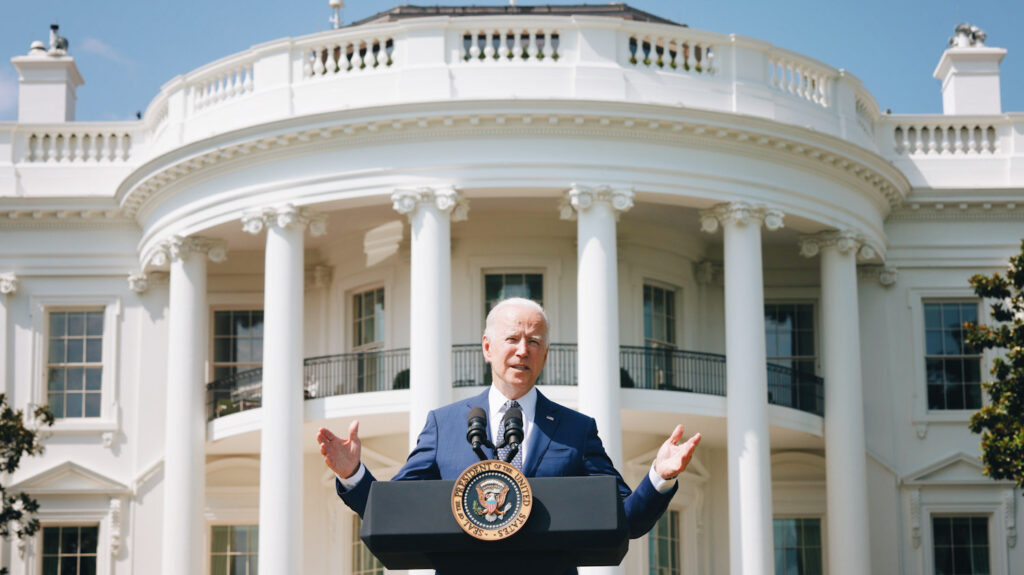President Joe Biden just outlined bold new plans to cut emissions and pollution from gas cars and trucks.
According to a briefing room statement from the White House, the president will soon sign an Executive Order requiring half of all new vehicles sold in 2030 to be zero-emissions. This means that all new vehicles must incorporate battery, plug-in hybrid, or fuel cell-based electric technologies in place of gasoline and diesel.
Biden will expect support from the Environmental Protection Agency (EPA) and the U.S. Department of Transportation (USDOT) to rectify emissions standards rollbacks implemented by the previous administration and initially welcomed by the automotive sector.
From 2023, the two departments will require new cars to emit 10 percent less greenhouse gas emissions (GHGs) than the previous year, with a reduction of 5 percent per year until 2026. Overall, the measures could significantly advance smart fuel efficiency, saving approximately 200 billion gallons of gasoline and cutting carbon pollution by up to two billion metric tons.
However, campaigners note that to reach his own goal of zero emissions by 2050, Biden will have to completely phase out fossil fuel-powered vehicles by 2035, just five years after his 50 percent target. This announcement marks significant progress but falls short of expectations.
“Strong vehicle standards protect our communities from unnecessary air pollution and fuel costs, and address the largest source of greenhouse gas emissions in the U.S.,” said Julie Cerqueira, Executive Director, U.S. Climate Alliance. “There’s much more work to do, but these new proposed rules are a critical step forward and will benefit our health, economy, and planet.”
Biden vs gas cars: Build Back Better with electrification
The Biden administration is working to both curb the devastating impact of climate change and strengthen the automotive industry as part of the Build Back Better Plan—a proposed $7 trillion coronavirus relief fund for investment in essential infrastructure and job creation.
The new emissions measures will serve both purposes, as the automotive industry is currently the largest source of GHGs in the U.S. Speaking to carmakers and unions at the White House last week, Biden reaffirmed that electrification is the future and that “there is no turning back.”
The Department of Commerce made $3 billion available to advance the domestic electric vehicle industry in the communities that are the “backbone of our auto industry,” via the American Rescue Plan.
“The question is whether we will lead or fall behind in the race for the future,” said Biden, as reported by The Guardian. “We used to lead in this technology and we can lead again, But we need to move fast. The rest of the world is moving ahead, we’ve just got to step up.”
At the briefing, the president drove a Fiat Chrysler-made electric Wrangler Jeep around the White House lawn, and executives from key manufacturers Ford, GM, and Stellantis also appeared to back the electrification of the industry.
Attitudes towards electrification have changed dramatically in recent years, and in a joint statement, the three car-makers said that they plan to “achieve sales of 40-50% of annual U.S. volumes of electric vehicles” by 2030 “in order to move the nation closer to a zero-emissions future consistent with Paris climate goals.”
BMW, Ford, Honda, Volkswagen, and Volvo also made supporting statements, the majority of whom have their own similar targets.


